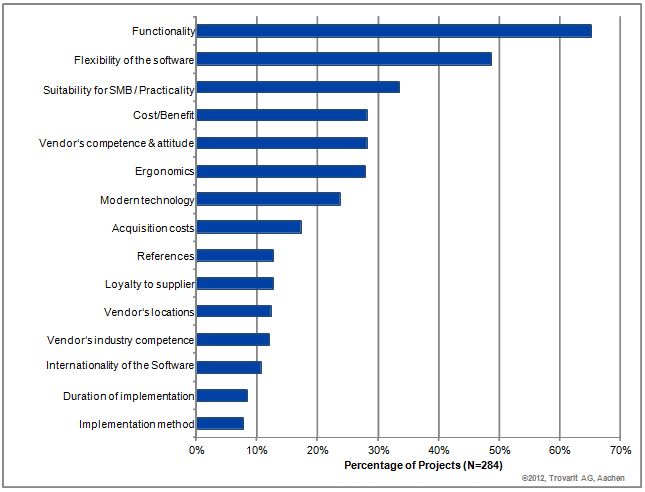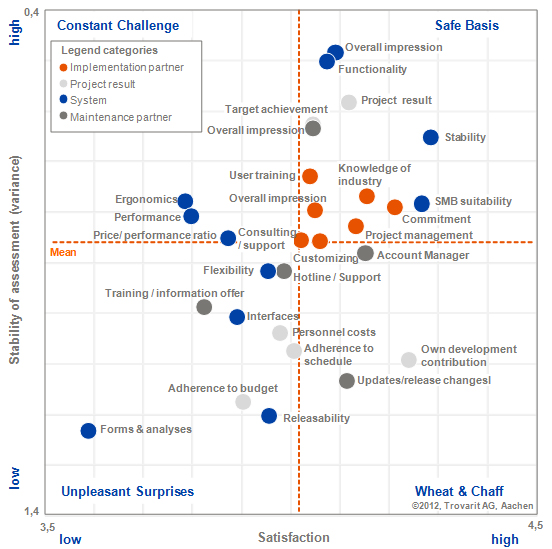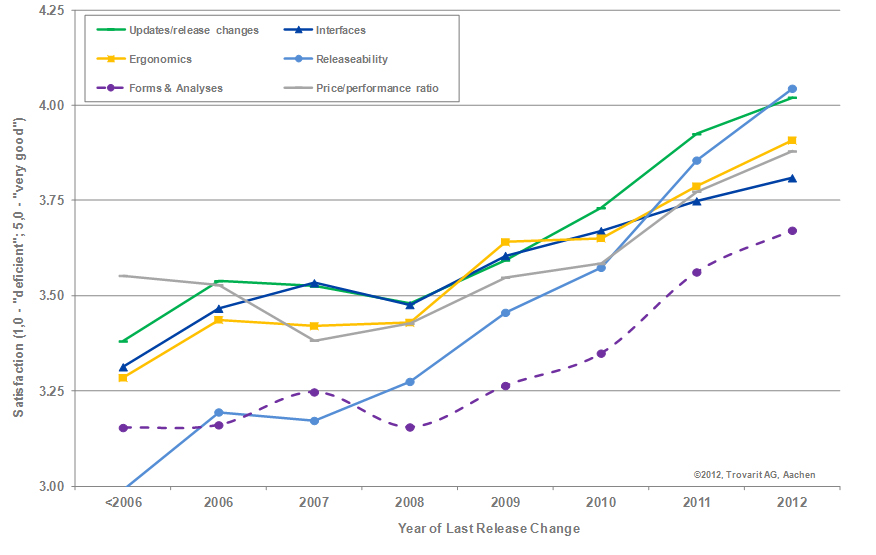The main goals of ERP usage can be summarised in one sentence: „‚Fast access‘ to ‚better information‘ in order to ‚optimise business processes’“.
The end-user of the ERP software tool plays a central role in this context: After all, the user is often the supplier and almost always the recipient of the data and the information processed by the ERP system.
Hence, aspects like practicality and ergonomics of the ERP software are important criteria when it comes to software selection – albeit clearly behind functionality and ergonomics.

It’s easy to follow this priorisation because the ERP software needs a specific functional scope in order to provide the required support for the business processes. Also the demand for high flexibility is understandable as company structures and processes rarely stay the same over a long period of time.
At the same time, the increasing digitalisation of business processes – not least driven by the ever more comprehensive and powerful ERP systems – holds a number of challenges for the user because it is very often accompanied by a significant rise in complexity. Especially new employees and occasional users are hard put to cope with this.
Thus, it is no surprise that user-friendliness has not been one of the strengths of ERP systems in the past. In fact, users regularly marked down the systems for their lack of ergonomic user guidance and ergonomics can be found among the „Constant Challenges“.

This criticism must be seen against the background of the very user-friendly, self-explanatory software the users know from their private lives. The image of the small child, who intuitively and easily uses a smartphone app, is a reference which is miles away from what ERP systems offer today.
However: Whatever the reason – the regular criticism of their customers, the good example of many apps or simply the fact, that ergonomics and efficiency of ERP use more and more become a USP – ERP manufacturers seem to pay increasing attention to their softwares‘ usability.
Aiming at a new „User Experience“, they invest in new approaches like, e.g.
- a user-centric, role-based interface design
- workflows for a better user guidance and
- „app“lification of complex business software products
And these efforts seem to pay off because user of modern ERP systems and up-to-date releases give much better marks for user-friendliness than users with older software installations.


